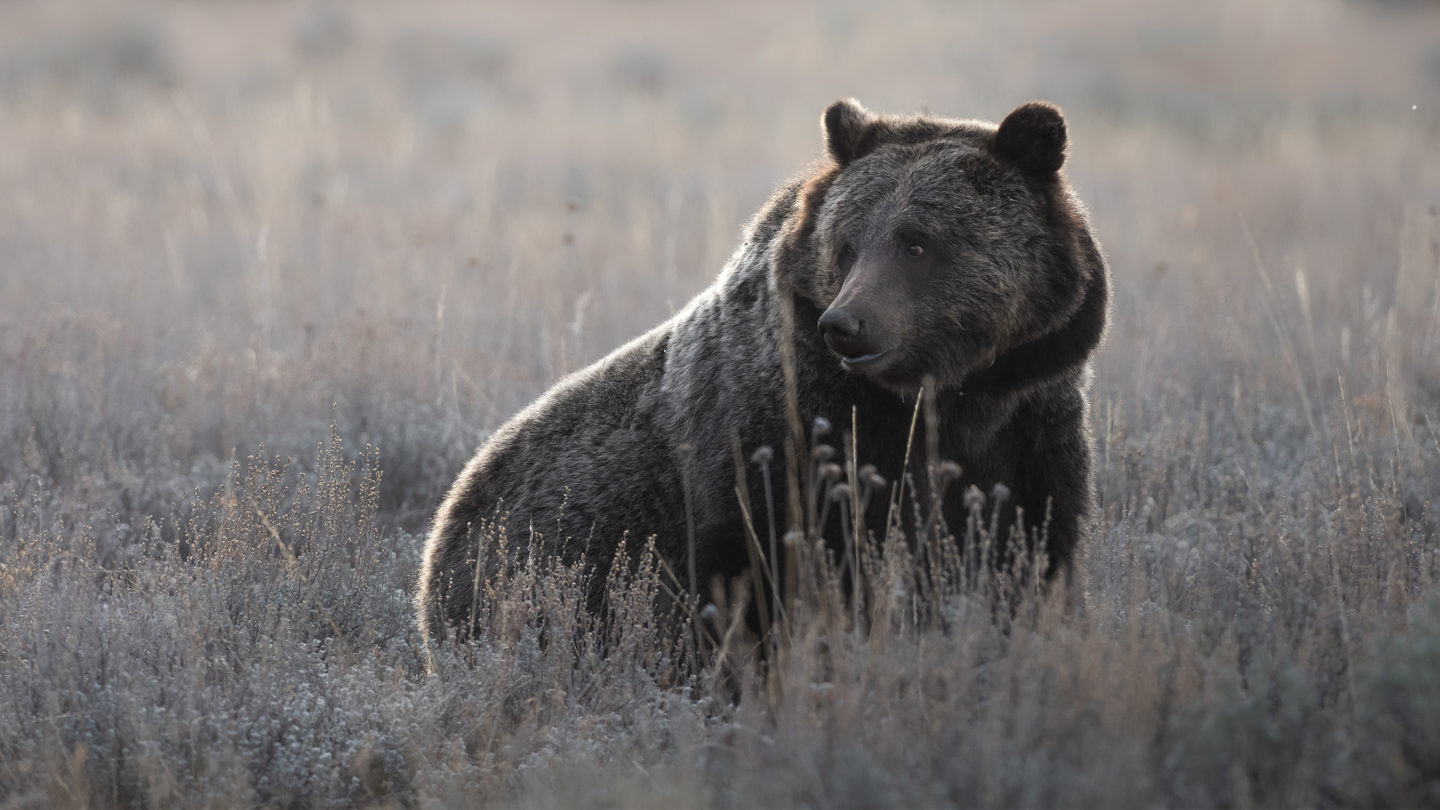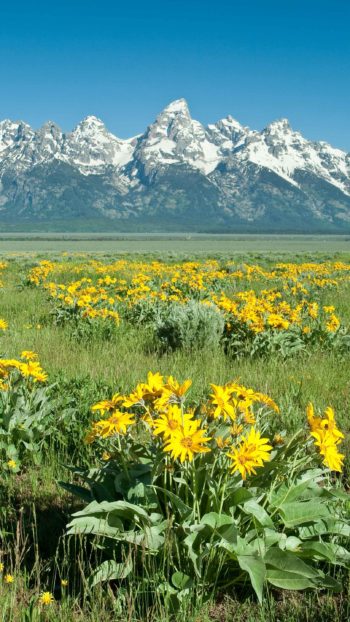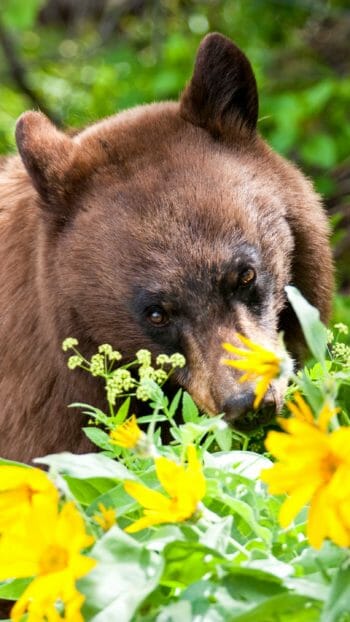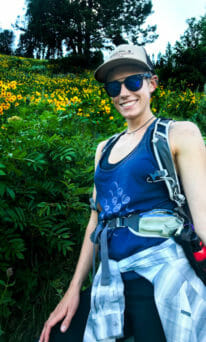In 1996 a grizzly bear was born within the quaint Pilgrim Creek drainage along the eastern boundary of Grand Teton National Park. In this bear’s youth the Interagency Grizzly Bear Study Team (IGBST) began researching this individual and gave her the now iconic number: 399. The IGBST formed in 1973 to contribute to grizzly bear conservation when it became apparent their population was in significant decline. 399 has become an emblematic part of the species conservation, and thus far has provided 27 years of data to be used for valuable insights into grizzly bear habitat usage, behaviors and reproduction success- along with many years of infamy thanks to the ever growing reach of social media.
399 might be one of the only bears in the world that has her own Instagram and Facebook page, along with her own paparazzi that will diligently patrol Grand Teton National Park in the hopes of photographing this bear going about her daily life. She has been dubbed the Queen, or the Matriarch of the Tetons and her reputation has grown well beyond the 310,000 acres that comprises this national park. While a multitude of grizzly bears have been tracked by biologists throughout the years, 399 has garnered a special reputation due to her habit of foraging and roaming near roadsides in the park. As a species notorious for preferring remote wilderness areas that are vacant of humans, here is a bear that has spent years patrolling busy areas with her cubs in tow.
What would cause this divergence from typical wildlife behavior? A primary theory is that 399 has learned that inhabiting regions devoid of humanity actually increases the chance of her cubs perishing. A boar (male bear) will actually commit infanticide upon encountering a sow (female bear) with cubs. This is due to an instinctual drive to eliminate a potential competitor’s genetics from the gene pool in order to ensure his own are the only to survive. Upon killing a litter of cubs, the boar will soon seek to breed with the now childless sow who might go back into estrus (heat). It is a brutal aspect of the animal kingdom, but 399 has learned she can circumnavigate this risk by essentially using us as a “human shield” for her offspring. Spending so much time in the public’s eye has certainly aided in expanding awareness for Grizzly Bear conservation, yet now 399 also faces a new risk- the acute anthropomorphization and celebritization of wildlife.

The basic definition of anthropomorphism is assigning human traits to nonhuman things. This has been a valuable tool in increasing the significance to things outside our own species, and has overall contributed beneficially to the roots of wildlife conservation. With increasing modernization of civilization, technology is not the only thing that has advanced, but also the barriers between humanity and the natural world. A significantly vocal portion of civilization no longer lives alongside the wilderness, now most humans have protective barriers like homes, cities, suburban communities and vehicles. Therefore, humanity is less at the mercy of nature and can now interact with it from a safer place. In other words- anthropomorphizing wildlife has led to a more mutualistic viewpoint of wilderness, as opposed to the domination mentality of conquer, kill and/or control. For instance, if humanity continued to view grizzly bears as a critical threat to survival then humans never would have seceded to protecting this predatory species. Fortunately, this pattern of modernization has allowed a new perspective to form where wildlife and human civilization can strive for coexistence. Which has hugely supported efforts to restore a variety of endangered species. However, extremes of any sort often impede wildlife management. While early settlements in the west sought to eradicate the presence of native predators due to their threat to survival, this newfound mentality of sentimental science is now impeding the pragmatic management of such wildlife species.
A recent example of this occurred in the Jackson Hole region during the summer of 2021. Two celebritized bears of Jackson Hole began to draw attention to the public eye. 399 and her entourage of cubs who began entering the residential areas of Jackson, WY in search of food, and grizzly sow 863 (affectionately dubbed Felecia) who began spending her days foraging for food around a busy highway east of Moran, WY. Like 399, grizzly sow 863 drew quite the crowd of photographers and onlookers due to her accessibility and the fact she had two adorable cubs of the year (COY). 863 was eventually hazed from the roadside with nonlethal methods like rubber bullets, specially trained bear dogs and sound deterrents. Law enforcement also began restricting access to observe this bear by mitigating crowds from forming, preventing people from parking their vehicles along the highway and above all- making sure no one got too close to her.
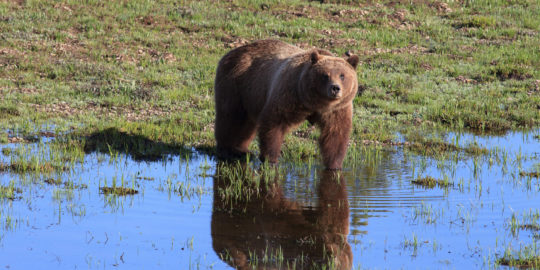
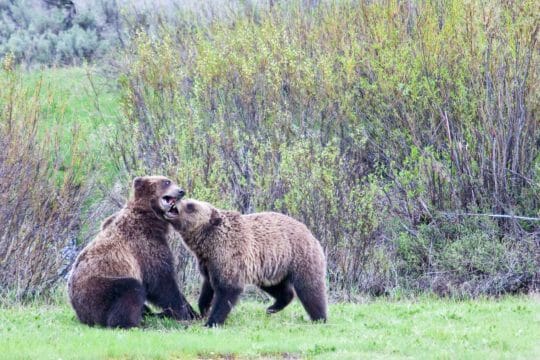
399 in contrast was never hazed from residential areas, resulting in her and her cubs finding multiple food rewards from trash, domestic bee hives and grains meant for livestock. Two of 399’s cubs were eventually captured and equipped with GPS tracking collars to allow wildlife managers to alert residents of her presence, and Teton County quickly initiated a bear proof trash can standard for the community to help restrict access to garbage. No other efforts were made to deter 399 and her four cubs from foraging around residential areas. In reality, this is part of living in Wyoming- coexisting with the natural world since most residents truly live amongst it. The problem with allowing this behavior in a bruin unsurprisingly revealed itself a year later, when one of 399’s adolescent cubs had to be euthanized after it separated from its mother and later consistently exhibited little fear of humans. Habituation to humans isn’t a problem for wildlife until it endangers them in the form of not fearing roadways where they could be hit by a vehicle, or become a threat to human life which will require them to be translocated or euthanized (unfortunately euthanization is the more cost effective method due to lack of funding for the alternative).
Thus it begs to be asked- did 399 receive special treatment due to her legacy? Ultimately did the community coddling her presence benefit the conservation of grizzly bears or harm it? It would seem due to humans anthropomorphizing this particular bear, her presence in residential areas and receiving food rewards was not safely handled and in some circumstances even encouraged. While the advantage of this is that 399 found enough food to feed her four hungry cubs, the negative is now there is a new generation of adolescent grizzlies that have learned the unnatural behavior of looking for food around human communities.
Guiding in the Greater Yellowstone Ecosystem provides a lot of exposure to wildlife related anthropomorphism. As a guide, I undeniably utilize this concept on the job to help guests better understand the wildlife we observe. The actions of animals can be relatively communicated by linking it to human motivations. For instance, being lonely, lazy, happy, curious or awkward. This effectively engages people who might otherwise be unfamiliar with the behaviors of wild animals. Another means I anthropomorphize wildlife as a tool is to set boundaries in order to ensure both guests and the animals remain safe. I like to compare how each human has their own bubble of personal space that we do not like being invaded, and it is the same for wildlife. These are not pets that enjoy being touched, getting a lot of attention and having loud noises made at them. Rather they are individual sentient creatures that deserve respect and space (to be specific 25 yards for most animal species and 100 yards for wolves and bears as enforced by the national park service). In the field I also like to thank wildlife for being present when I find them in their natural habitat. Gratitude is something these animals do not perceive, but since there is never a guarantee we will be able to find moose, bison, elk, bears or other species on tour it feels appropriate to recognize the value of them being visible.
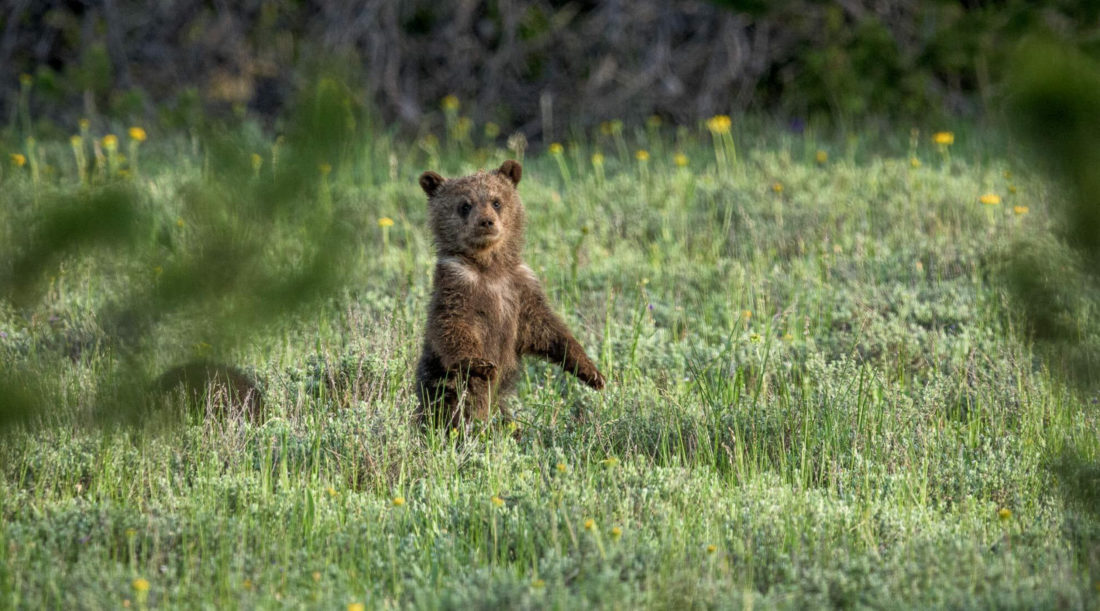
How do I not anthropomorphize wildlife? These are entirely personal partitions, but I do not name wildlife. As a separate species I know I do not speak the native tongue of these animals, and they may already have their own unique title that I simply cannot convey due to language barriers. I also do not want to view wildlife as pets, because choosing to name an animal is a declaration of ownership and power over that creature. Assigning numbers to wildlife, like 399, is entirely different. Biologists need to distinguish individuals in their datasets, therefore titles are vital to organize information. Celebritizing specific individual animals is another precarious subject for naturalist guides. For instance, giving one individual bear such notoriety may seem beneficial in that it promotes more awareness for the species as a whole, but often the general public begins to fixate on this one specific bear and omit the value of the entire species as a whole. As a guide I’ve witnessed this when observing bear species in the Greater Yellowstone Ecosystem. Upon finding a bear, guests are usually very excited to witness such an elusive large mammal, but on more than one occasion the experience is rendered unfulfilling because it is not a particular individual… which in Grand Teton would of course be the iconic queen, 399. It is a delicate subject to navigate. I will highlight to guests the value of finding a still endangered wildlife species, but the perceived personal connection to this celebritized grizzly bear usually overwhelms any interest in seeing any other individual of the species. Dissatisfaction can be rampant when the specific object of desire is not delivered. Does this obsessive mentality help or hurt the entire species?
The restoration and continuing growth of the grizzly bear populations in the contiguous United States has been a long, arduous journey. An estimated 50,000 grizzlies once roamed the western portion of the country, occupying a habitat of approximately 1,550,000 square miles (992 million acres) in size. Numerically- that’s a relatively low concentration of bears to land mass, which is a primary reason their population was so susceptible to overhunting. Fortunately by 1967 Grizzly Bears were listed as endangered thanks to the formation of the Endangered Species Preservation act of 1966. The US Fish and Wildlife now had the responsibility of working to preserve, restore and protect the species to ensure it did not completely disappear from its native habitat. Specific criteria were established to remove the grizzly bear from the endangered species list, one of them being that the Greater Yellowstone Recovery Zone (nearly 6 million acres in size) needs a minimum of 500 bears with no less than 48 of them being females with COY present in order to ensure the species is not at risk of extinction. As of 2021, an estimated 1,069 grizzly bears inhabit the Greater Yellowstone Recovery Zone. Meaning, over a span of 50 plus years conservation efforts succeeded in increasing grizzly populations by double the minimum recovery numbers. A dramatic revolution since the 1800s, when there was actually a bounty for killing this species due to their presence being a risk to humankind as the exploration and settlement of the west became more prevalent.
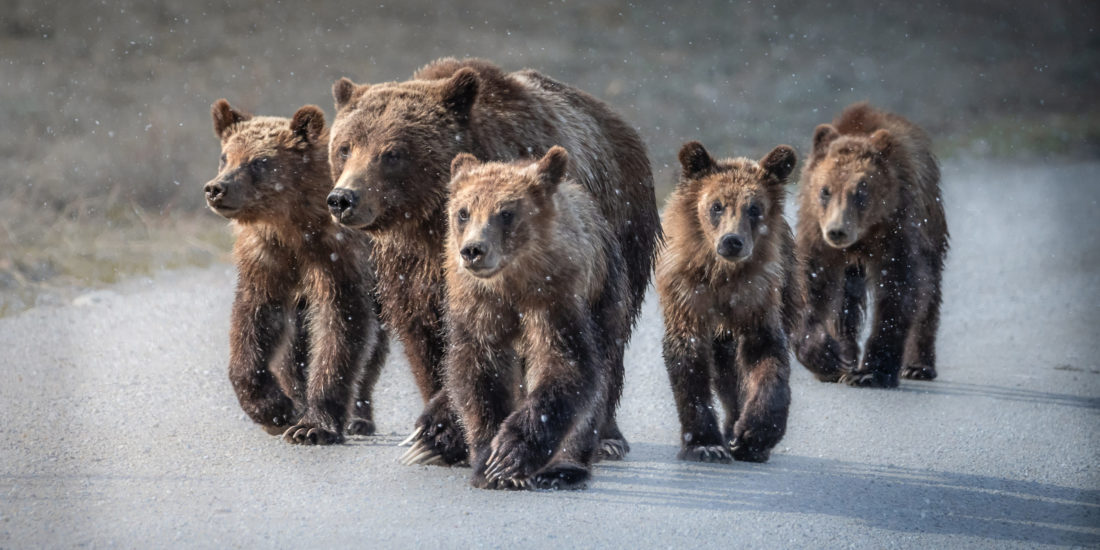
Yet overhunting has not been the only historical threat to the notorious Ursa horribilis of Yellowstone. In the early 1900’s, as visitation increased in the park, so did wildlife-human interactions. Even then bears were a high demand animal to observe, and due to more lax regulations at the time, feeding these animals was actually permitted. In fact the National Park Service even abetted in this by establishing the now forbidden “Lunch Counters”. These were set up near lodges where food scraps from restaurants would be redistributed, visitors would gather for the occasion to watch a multitude of bears congregate to feed. Garage dumps were even deliberately left accessible for bears and other animals to scavenge from.
This practice continued for over 50 years, a long enough time frame that bears began to lose their instinctual knowledge of how to hunt and forage for themselves. By the 1960s it became illegal for visitors to feed wildlife, bear proof trash cans became a staple of the park and bears that continued to beg or break into structures in search of food rewards were euthanized. Overall, this new form of management would benefit the species in helping them return to more natural behaviors, yet bear populations exhibited a sharp decline following the restriction of human food due to the fact they became so far removed from finding nourishment in their own native habitat. This is one example of how humanity’s perception of wildlife greatly impacts our ability to healthily manage them. Grizzly bears went from being a mortal threat to a growing civilization that must be eradicated, to a borderline domesticated form of entertainment to visitors who were more than likely anthropomorphizing these wild animals as needing as many treats and as much attention as a household pet. Neither practice was advantageous to conserving this particular species.
The regulation of wildlife species requires a degree of pragmatic idealism to allow for the unbiased execution of management plans that were generated from extensive scientific studies. Loathing a species will obviously result in it being mismanaged by extermination, yet over-loving a wild animal has proven to result in allowing it to be treated like a pet to the degree the animal is coddled, creating new management complications. None of these extremes are beneficial to wildlife conservation, and ultimately neither helps the relations between humankind and the natural world. For Jackson Hole, 399 has inadvertently become a symbol of this polarizing debate. Is there a solution to managing these two mindsets? Not directly, but a lucrative start would be understanding the years of effort and funding that has been invested in protecting grizzly bears in the United States. The US Fish and Wildlife Service developed management plans for any species that have even been listed under the Endangered Species Act, which are a valuable unbiased source for information on the honest ecology of ongoing conservation practices. It is also crucial to maintain the understanding that due to human development wildlife no longer has the same quantity of habitat that existed in the 1700’s. Therefore populations of certain species may never reach historical highs due to a reduced carrying capacity. As a result, population regulation is necessary to ensure species do not become overcrowded on limited landscapes that can only support so many individuals. Balance is challenging, especially when it comes to opinions on the natural world, yet no matter what humans whether they be hunters, fisherman, hikers, rock climbers, photographers, tourists or just avid National Geographic watchers, are all stakeholders in managing the natural resources the undeveloped world is ripe with. And each deserves an equal influence over the subject.

